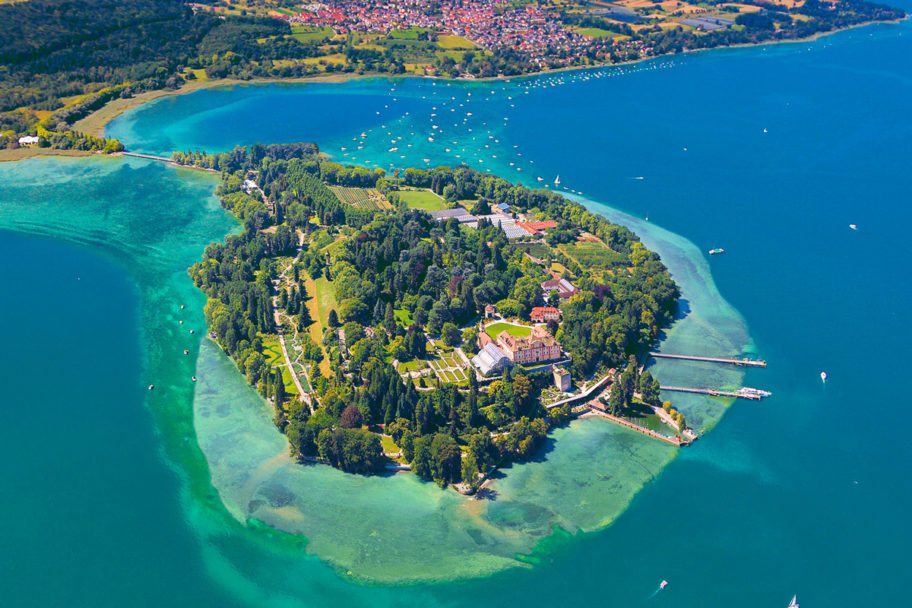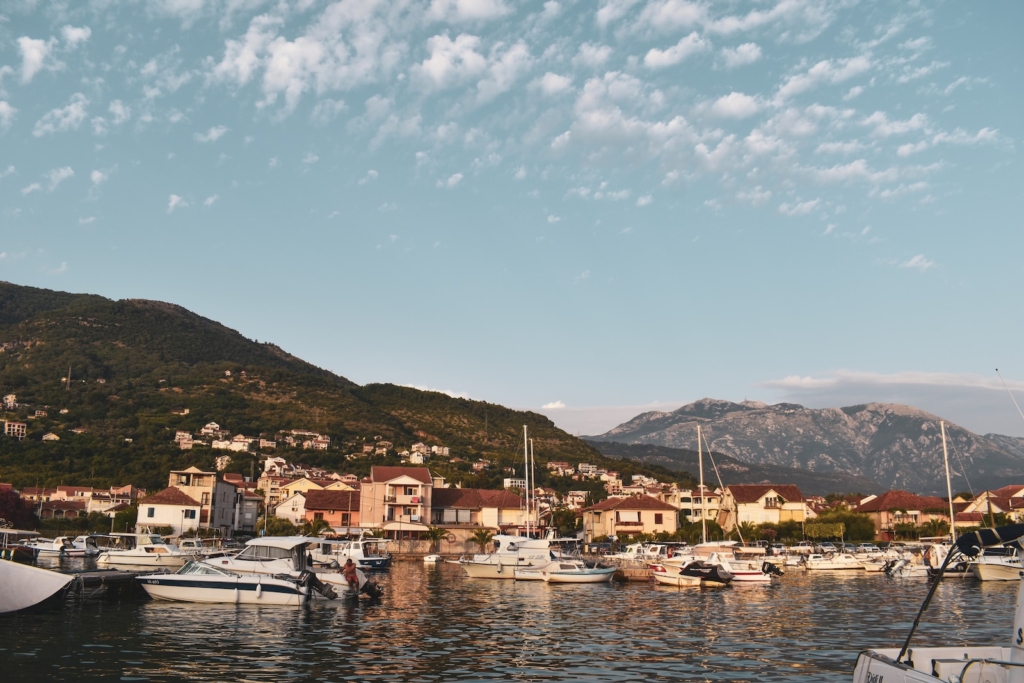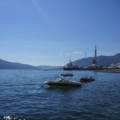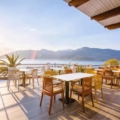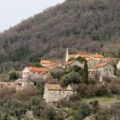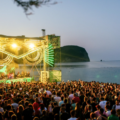The Island of Flowers is a hidden gem of Boka Bay, a well-kept secret that visitors to Tivat can uncover. This is one of three islands in the area that is known for its long history, religious relevance, and mesmerizing beauty. One of its interesting features is that the island is also a peninsula, which makes it a geographical marvel.
The island has witnessed many changes, from peaks of popularity to complete abandonment, and today it lives on as a true testament to the turbulent times Montenegro survived.
If you want to learn more and discover what makes this gorgeous island so special, keep reading as we tell you the story of the ultimate getaway destination in Tivat.
Tivat
Tivat, the sunniest town in Montenegro, has been seen as the crown jewel of Boka Bay. It is set in the heart of the stunning fjord, which is why the town features one of the most picturesque promenades on the coast.
Besides the gorgeous blue Adriatic as its backdrop, Tivat has plenty more natural landscapes to offer. One of them is Vrmac Ridge, a natural divider between Tivat and Kotor. It offers amazing trails that allow hikers to enjoy lush forests and mesmerizing panoramas. Close by is also one of the most enchanting rustic areas, the village of Gornja Lastva. Here, you can experience Montenegrin history by walking through cobblestone alleys with stone houses and ancient olive trees.
Tivat is also home to the Lustica peninsula, an unspoiled paradise of wild beauty. It provides equally alluring beauty with its secluded beaches and olive-clad hills like the rest of the attractions. Adding to the city’s natural landscape is its Botanical Garden, a vibrant collection of exotic flora and a favorite spot of citizens.
Finally, the town’s three islands—Our Lady of Mercy, St. Mark, and Flower Island—give visitors an immersion into the beauty and historical secrets of the city.
The Island of Flowers
A Distinct Geographical Occurrence
The Island of Flowers, also known as Miholjska Prevlaka, is located in the Adriatic Sea. Its popularity comes from a peculiar geographical feature many find intriguing. Namely, with a length of 300 meters and a width of 200 meters, the Island of Flowers is an impressive combination of an island and a peninsula.
Its character changes when the tides rise and fall because of the isthmus that links it to the mainland. Therefore depending on the timing you can always take a leisure stroll to the island or substitute that with a peaceful boat ride.
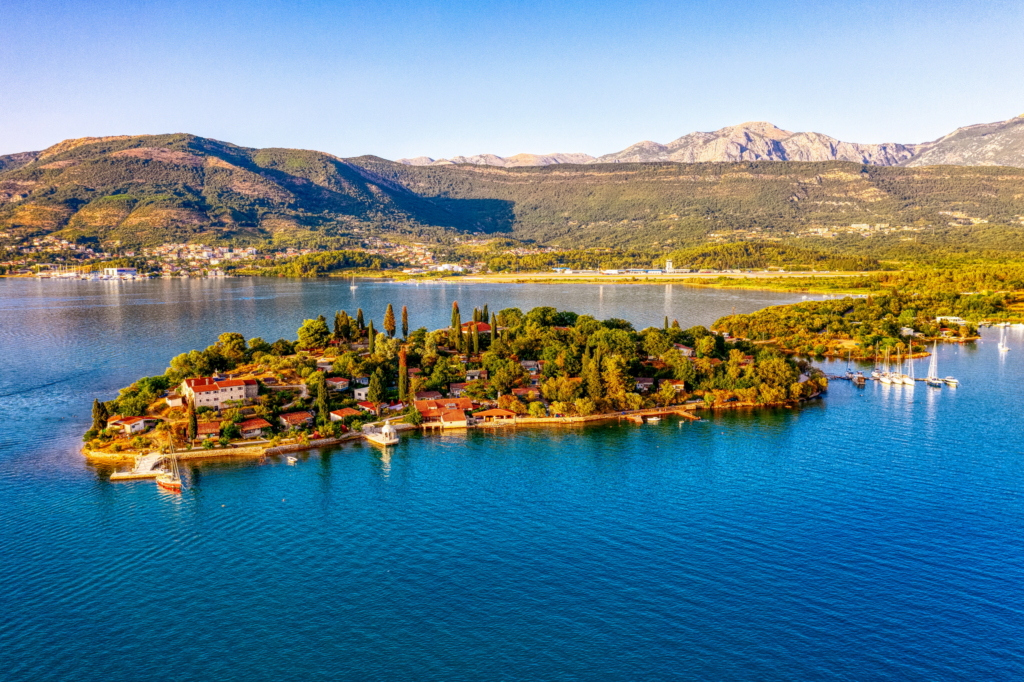
Fauna and Flora That Enchant
What makes this location so unique is the environment’s diversity and beauty, complementing its geographical uniqueness. The ‘Island of Fragrance’, as many locals call it, is an area that is filled with lush vegetation which ranges from tall trees to fragrant flowers. Here you will have a chance to admire palm trees, olive trees, and flowers. Make sure not to miss a variety of plants that originate and grow only here.
On top of this, the island’s rich biodiversity is also reflected in the presence of many kinds of animals. This is why many nature lovers decide to spend some time here.
An Authentic Monastic Heritage
Throughout history, Flower Island was a big center of religious importance. The oldest preserved record of life on the island dates back to the 12th century. Historic records state that the oldest mention of Prevlaka was in 1124. It is showcased in many books, which feature documents about the municipality of Kotor and the Cathedral of St. Tripuna on some land on the Prevlaca.
Monastery of the Archangel Michael
The traces of the island’s past are still seen in its main attraction, the Monastery of the Archangel Michael. The first monastery that was built here dates from the sixth century. Over time the compaund was further improved creating what we know as the island’s fortress. The premises were well maintained, and they carried a huge religious significance for the Orthodox Christians in the region.
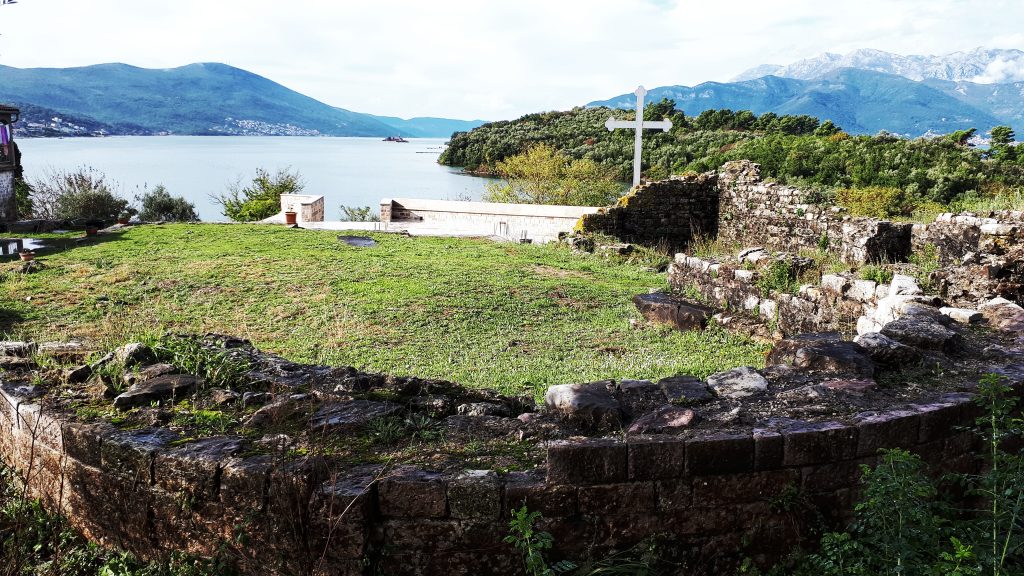
At the beginning of the thirteenth century, the complex grew to a point where it encompassed the whole island. Because of its size and historical value, the island became the residence of the Metropolitan of the Serbian Orthodox Church.
Unfortunately, in the late fifteenth century, this area was experiencing plenty of political convolutions and historical battles. The Republic of Venice at this time expressed a claim over this section of the Bay of Kotor, setting the monastery at the center of the conflict. In order to break the resistance and conquer the island, it is believed that the Venetian government tainted the island’s food supply. The outcome was the deaths of over seventy monks who at the time resided in the monastery.
The authorities announced that a plague epidemic had contaminated the monastery, burying the truth. After this, the Orthodox Metropolitan’s home was relocated, and the Island of Flowers became deserted. The remains of these martyrs are still preserved today, and they are buried on the island.
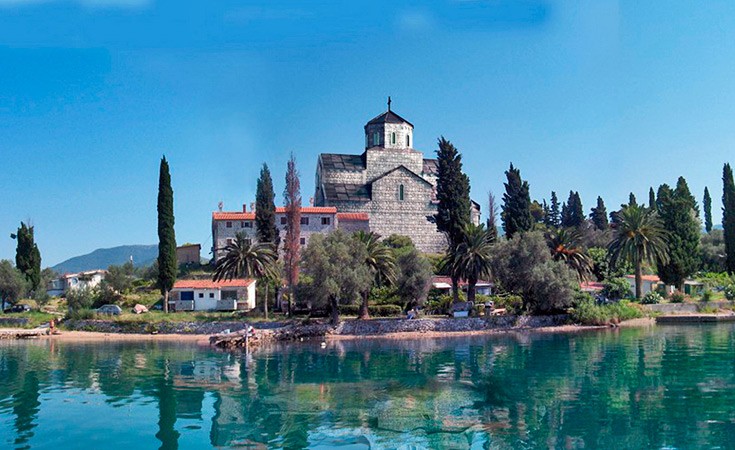
Church of the Holy Trinity and New Monastery
The island’s religious character was re-established after the misfortunate events when the Church of the Holy Trinity was built. This was a gift to the Serbian Orthodox Church by Katarina Vlastelinovi, a noblewoman from Kotor who built it in 1833. The one-nave church with a rosette on the western facade of the entrance portal still exists today. It is one of the most visited monuments on the island.
Besides this small church, the religious authorities decided to rebuild the church of Archangel Michael due to its significance. They preserved as much as possible of the original ruins and incorporated it into the contemporary design. This is depicted through the colorful mosaic above the gate showing the Holy Trinity, in whose honor the church was consecrated.
Conclusion
The Island of Flowers represents a unique destination on the Montenegrin coast. This historic sanctuary represents a natural beauty reserve. Visitors can spend the day among distinctive species because of its rich religious history.
Set on the most beautiful part of the Adriatic coast, the monasteries of the Island of Flowers will tell you a story of a gloomy past and incredible dedication to the preservation of religious heritage that Montenegrins so deeply cherish.
If you are lucky enough, you will see the transformation of the island into a peninsula, which will become a memory you will remember for a lifetime.

